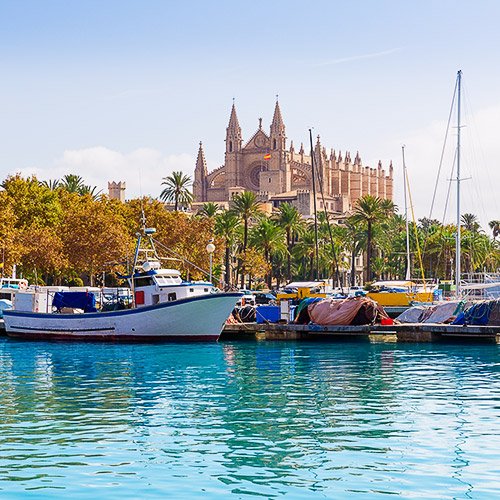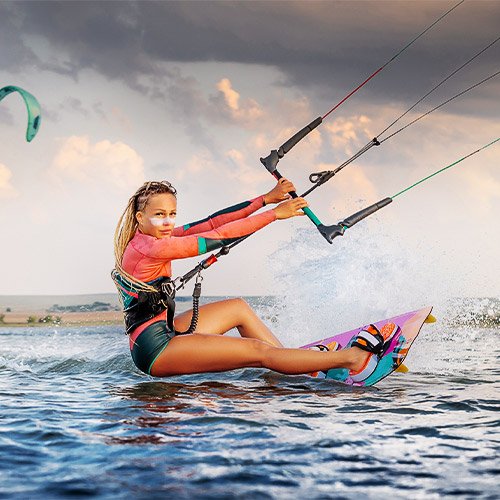The check-in processes
Before arriving at the docks, you should have already filled-in a crew list and sent copies of your sailing license or competences. The paperwork takes four checks:
- ID’s
- Qualifications
- Deposit
- Documents
1. ID's
First, they will request the ID’s and/or passports of your crew members, to confirm the accuracy of the crew list already sent. Just a reminder, you can get in trouble with harbour authorities if it isn’t filled in correctly. Another tip would be to already have copies of the ID’s or passports from your crew members, this way the check-in process will take less time.
2. Qualifications
The second check is for your qualifications as a captain. Even though you have sent electronically the documents, an inspection of the originals will be required.
3. Deposit
In the third place, they’ll sort out the security deposit – this means blocking the amount on your credit card for the security deposit, similar to the rent-a-car process. If you return the boat in perfect condition, then they’ll refund the entire deposit. If not, they’ll deduct the value of the damages from the security deposit, and charge your credit card.
4. Documents
Finally, the fourth step is concerning the captain of the boat to sign a few forms, including the charter contract, insurance, check the boat’s documents, then they’ll hand you the necessary copies and the boat documents for safe keeping on the boat. Take good care of these documents becausein case of need you need to present them to harbour authorities or coast guard if they ask to see them.
Handing over the boat
After all paperwork is concluded, you can go to your boat. This is the stage when a member of the charter operator’s team will come on board with you to inspect the boat. Here are some top tips and checks you must do in order to have a perfect vacation and not to be blamed for damage caused by others. The member of the charter company will also have a check list to follow, that you will sign at the end, however don’t miss out these essentials:
- Boat exterior
- Windlass check
- Sail Reefing
- Lines and winches
- Speakers
- Depth Sensor
- Toilets
- Check the Valves
- Battery and lights
- Safety equipment
1. Boat exterior
One of the first things to do when handing over a charter boat, is have a walk around first and while doing this, you can check some things along the way. Check the sides for anything unusual and if you see a scratch or a bump, take a photo of it (make sure you don’t drop the phone in the water). Walking further on both sides of the boat you can check for any wobbly or bent stanchions. The fenders should be also checked if they are damaged or if they are well pumped up and also count them and remember the number. This will not just help you check for damages, but you will also get used to the boat.
2. Windlass check
Once you reach the bow of the boat, lean over and check if there are any anchor scratches or damage on the hull, a common thing to happen with charter boats. After that check the windlass and make sure it works. Turn the engine on, put it neutral and don’t pull the anchor in, just check if the chain is going up and down by pressing the up and down buttons on the remote. You can also ask if there were any issues with the anchor and of course how many meters of chain are aboard. Another key question is to find out where the windlass breaker is. If it works too hard, it will break off and all you need to do is to put it back on, so it’s essential to find out where the windlass breaker is on your boat.
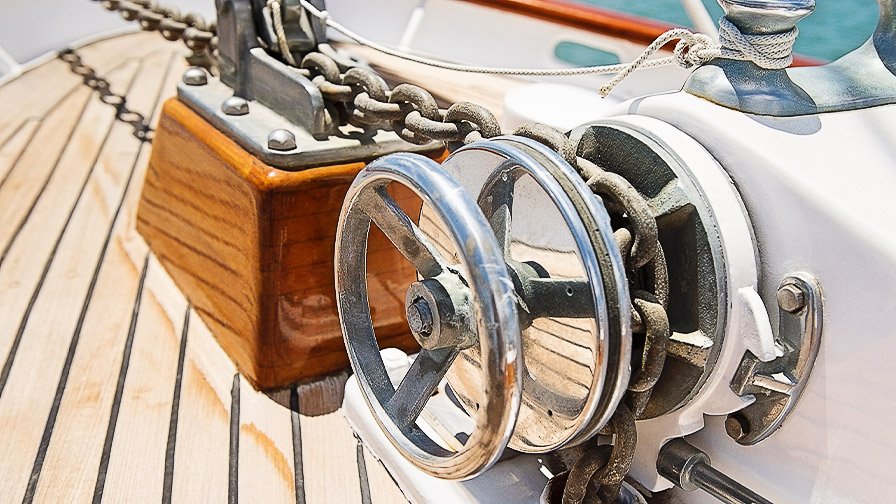
Windlass
capetanos.com3. Sail Reefing
In case of strong winds, you need to reef the sails, so it’s essential to know how this particular boat is reefed. There are three or four ways to reefing the sails and just ask them to show you how it’s done. It’s easier with the in-mast furling, but even so, check all reefing lines and manoeuvres so you have a perfect holiday. A good idea would be to take pictures of the process, so later you can check it again, in case you missed something.
4. Lines and winches
Speaking of lines, take a look at them, check if there is any loose line or damaged and remember to take some pictures. If a line is damaged it should be changed with a new one, doesn’t worth to put you, your family and friends in danger. Winches should rotate clockwise, so on your way inspecting the deck, rotate them to check if they are working or not.
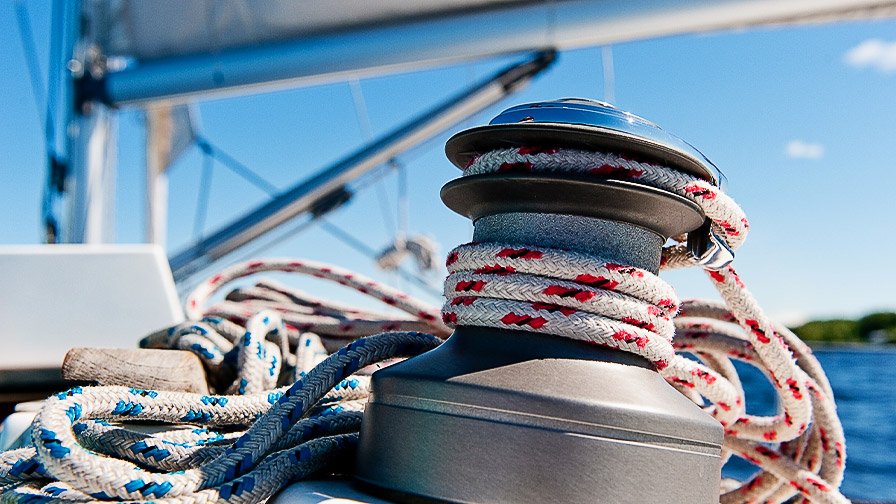
Lines and winches
capetanos.com5. Speakers
Another classic check is for the stereo speakers and the sound system. Any reasonable charter yacht should have exterior and interior stereo speakers. Turn the music on, push the volume up and check if there is any blown speaker. You don’t have to be charged for other people’s blown speakers, and it will also be a good chance to enter the holiday mood.
6. Depth Sounder
Along with other electronics in the cockpit, a good advice is to check how the depth sounder works and how depth is measured, because there are several ways to setup the sounder. The sounder is installed on the bottom the hull, and is measuring the depth from the bottom of the hull downwards. What you have to do is ask or read the “offset” value on the Depth Sounder.
- If the displayed value is 0 the sounder will display the depth 8 ft.
- If the displayed value is +2 the sounder will display the depth 10 ft.
- If the displayed value is - 4 the sounder will display the depth 4 ft.
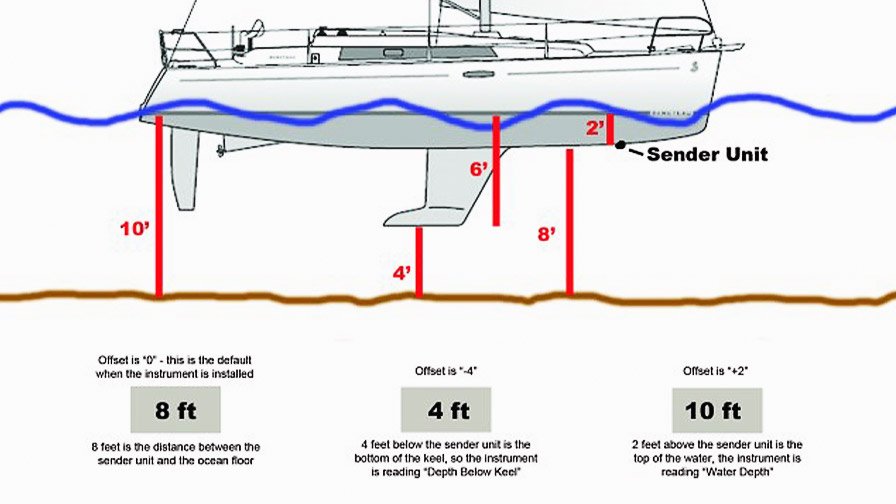
Depth Sounder
Picture copyright: tradewindssailing.comWhich one of the settings is correct? All of them are correct, but is important to understand the math behind it so you don’t run aground.
You can easily check the sounder setup with a chart of that area by comparing the exact depth from the map with the one on the display, or with one of the available marine mobile apps.
7. Toilets (Heads)
You need to be familiar with the different types of toilet systems and see if they work or not. Even though they are manual or electric you should try flushing all of them just to be shore they work. You don’t want to have an unfunctional toilet for an entire week. If you check the toilets, check also the portholes, to be sure they open and close easily and none of them is loose. Seawater “loves” to come inside through the porthole while underway, so be sure you check them too.
8. Check the Valves
Another important advice is to know where the water tanks changeover valves are. Every boat has a very different, discrete place where you can find them, so ask them to give you a look, and of course take some pictures. Important tip, never run the water pump dry, so check regularly the tanks water levels.
Next you need to know where the holding tank valves are, so you might be able to empty the tanks later in the week, and it’s always worthwhile to ask them if there were any blockages lately, to be sure everything will work properly.
In particularly, you need to be extra careful with gas on boats, so you need to know exactly where the gas shutoff valves are. Usually, the boats have a solenoid switch connected at the gas tank or a shutoff switch underneath the oven. When you are not cooking the gas switch must stay in off position.
9. Battery and lights
Ask them what is the normal batteries level and what is the minimum, because once a day you must charge the batteries, even if it’s solar or wind power or if you need to run the engine or the generator to charge them.
Also, ask about and check the sailing lights. It’s essential to know from where you can turn them on and off. Best is to light up everything and check if they work or not.

Night navigation lights
capetanos.com10. Safety equipment
Last but not least, check the safety equipment. Actually, this should be the first thing to check when you come aboard. Check the life vests, the life raft, first aid kit, etc. Never go sailing without safety equipment, not just because it is mandatory but because you could endanger you or your crew members.
At Capetanos we believe that renting a boat is a great way to bring family and friends together, enjoy the summer out on the water and make unforgettable memories in some unique places
There are many things to consider before you rent a boat but with proper preparation and by following the above tips, you will have a great rental experience out on the water.

